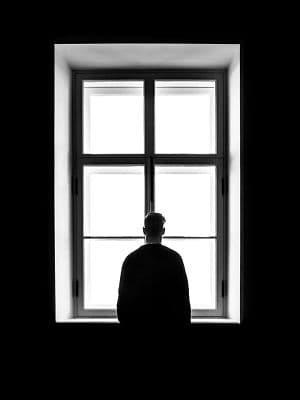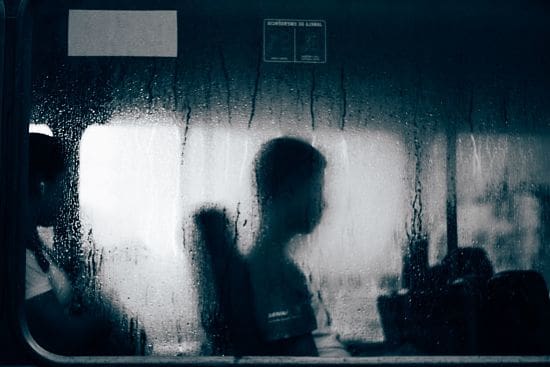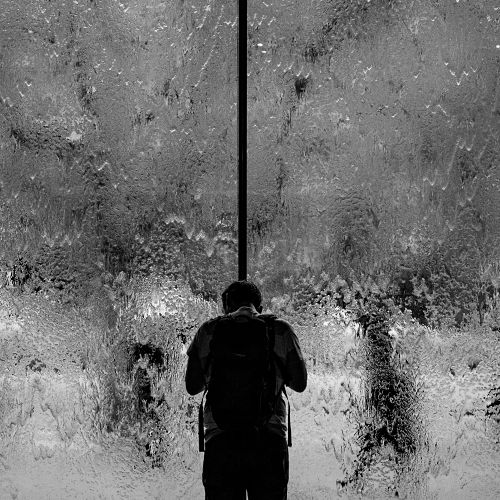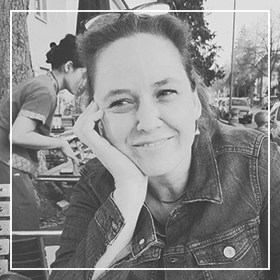In this thematic week we aim to think through the notion of displacement. At a time that is marked by unprecedented movements of refugees and migrants on the one hand, and deep-seated anxieties of becoming a “stranger to one’s own land” (Hochschild 2016) on the other, we believe that it is pivotal to reconsider this idea from various perspectives. Bringing together eight social anthropologists who give insights into their on-going ethnographic research in different parts of the world, we tackle this theme by giving precedence to the often-dialectical ways displacement and emplacement are experienced, lived and made sense of by groups and individuals.
Can the social rupture experienced by a refugee be compared to the struggles of the poor who are being pushed out of their houses, or to the uprootedness of a homeless person endlessly wandering the city? And can the feeling of desperation over the loss of one’s home and belongings be compared to the feeling of alienation that tends to creep up on people who feel that they can no longer connect to the “homes” they have? Is there a link between a political, a social and existential sense of displacement?
Rather than compartmentalising these challenging questions, this thematic week aims to bring them into conversation with each other. We do so by creating the space for engagements with displacement that look at it from radically different angles, socio-political contexts and experiential horizons. In this vein, this week unites entries from places as diverse as squats in São Paulo’s city centre, gatherings of unaccompanied minors in the Swiss Canton of Bern, a Starbucks café in inner-city Philadelphia, the transnational space extending between Germany and relatives living in Afghanistan and Iran, a shopping centre in Buenos Aires, a small tourist town in the Alpes, wildfire- and austerity-affected Athens as well as a documentary on a tourist enclave in Oaxaca, Mexico. This diversity will provide insights into the experiences of refugees and migrants, as well as into the chosen displacement of tourists and expats, or the feelings of estrangement expressed by people who, at first sight, might appear to be very much settled.
The ethnographic vignettes, stories and moments the authors present in their articles allow us to move beyond the programmatic and taken-for-granted ways the term displacement is frequently used in public as well as in academic discourse.
We start from the premise that displacement is neither a local nor a contemporary experience or condition. Whether we consider historical dislocations in the context of slavery, violent conquests and forced resettlements, urban regeneration projects, agrarian land reforms, natural catastrophes caused by drought, floods and famines, or man-made environmental disasters caused by nuclear fallouts, mega-dam constructions and mining operations –
displacement as an act, a condition and an experience is as old as human history.

As a theoretical concept displacement is also not new. It has played a crucial role in Western theory and thought. Social figures such as the stranger, the outcast, the pilgrim or the nomad already appear in prominent places in the old testament and Hebrew Bible, and themes such as exile, eternal wandering, estrangement from “home” and alienation are central motifs European thinkers and writers return to again and again throughout history (Petersen 1999). Displacement thus needs to be read against the backdrop of particular genealogies of dislocation – both as a condition driven by histories of war, colonialism and violent conflicts and as a conceptual metaphor for an existential sense of rupture and alienation.
In current debates, displacement is predominantly used as an operational concept to describe the movements of people who have been forced to leave their homes and countries due to violent conflicts (Hammar 2014). This use has been strongly shaped by the aftermaths of the Second World War, when countries started to develop techniques for managing mass displacements (Long 2013). With the creation of displaced persons’ camps across Europe, the establishment of the United Nations High Commissioner for Refugees in 1951 and the birth the Geneva Convention relating to the status of the refugee, the figure of the refugee emerged as a knowable and nameable object of knowledge (Malkki 1995: 2). This figure has come to dominate contemporary representations of displacement. It stands for a sense of trauma, loss and disorder, a rupture of the “national order of things” (Malkki 1995) that needs to be “fixed” through international laws and humanitarian interventions.
Given its strong connections to legal, humanitarian and policy debates, this framing of displacement is largely operational and neither allows for a critical questioning of the social and political production of this figure, nor of the discrepancy between discourses and actual experiences of displacement. In this thematic week we intend to move beyond the policy-oriented interpretation of the notion of displacement.
We argue that the labeling and iconographising of certain types of displacement went along with narratives and images that contributed to its naturalisation, producing a subject category associated with chaos, emergency, victimhood and passivity.
This partial understanding of displacement does not just generate analytical blind spots. As the events surrounding the European refugee “crisis” demonstrated, an understanding of displacement that is based on the panicked logic of crisis (Holmes and Castañeda 2016) risks reproducing exclusionary ideas of belonging, entitlement and territoriality. We argue that these dynamics should be part and parcel of our critique and that we can therefore neither take the figure of the refugee nor the meaning of displacement as a social phenomenon for granted.
By creating a tapestry of divergent voices, stories and images, we aim to show that far from being a straightforward term to describe a disconnection from a given “natural” place of belonging,
displacement is a complex and multi-layered condition that is inextricably linked to the ailments of advanced capitalist societies.
The sense of anguish, alienation and rupture inherent in displacement might therefore appear in the lifeworlds of people who have lost their homes due to a natural catastrophe amidst a country that is – politically and socially – “at fire” (Cabot) as much in the ceaseless struggles of refugees and “locals” to find a place they can call “home” amidst the increased gentrification and social fragmentation of urban centres (Drotbohm). A sense of ‘being-out-of-place’ can show in young refugees’ attempts to work against societal forces that make them feel unsettled (Lems) as much as in the experiences of people whose freedom to move within a city is contested because of their racialized appearance (Ramsay). Displacement, two of our four entries make clear, can also correlate with time, when individuals relate their experiences of non-belonging to former times or to the ruptures lived simultaneously by their loved-ones living in other places (Moghaddari). Finally, also those living amidst touristic “paradises” can feel distant, trapped and out of place in their struggle to find a common temporal frame in which to live and to interact with other individuals inhabiting the same space (Leitenberg).

Importantly, the articles show that displacement cannot be thought of without its counterpart of emplacement. Places such as shopping centres that are often thought of as epitomes of displacement turn out to be important social spaces that allow for the creation of new sociabilities amongst people who struggle to claim a space of belonging elsewhere (Reiffen). Likewise, struggles against displacement – such as the fight against gentrification, or the young refugees’ resistance against being pushed out of place – prove to be essentially struggles for emplacement. New sociabilities, according to Glick Schiller and Çağlar, that include relationships of social support, help, protection, resources and further social connections (Glick Schiller and Çağlar 2016: 19), can provide a sense of commonality, belonging and ‘being-in-place’ despite conditions of fragmentation and social exclusion. The contributions show that one and the same place can simultaneously harbour conditions of emplacement and displacement.
While analysing displacement from people’s actual lived experiences allows us to bestow the concept of displacement with more nuance and complexity, this does not mean that we block out the political forces and power inequalities playing into these experiences. Power discrepancies and structural impacts therefore form an important element of our analytical angles. A coastal fishing village in Mexico that forms the long-dreamed of escape from the pressures of capitalist society to some, can thus be experienced in terms of the exhaustive struggle against government forces attempting to expropriate their land by others (Reade’s film). And a landscape that might be experienced as symbol of a primordial sense of belonging by some (Leitenberg) can violently reject other people’s attempts at being included in the very same space (Lems).
By giving space to these divergent perspectives and experiences, we aim to explore displacement as a multidimensional and contradictory phenomenon that does not only allow us to reflect on the experiences of those who have been displaced, but also on the long and short-term processes that lead to exploitative and exclusive political configurations.
The authors of this thematic week are circumspect not to reproduce labels, categories and discursive figures that are based on a binary ontology of belonging and non-belonging to bodies, families, territories, cities, and nation states. By paying attention to the ambiguous and often-contradictory ways displacement appears in people’s lifeworlds in socio-economic settings as divergent as those united here, we aim to move the discussion of displacement beyond (forced) migration literature and the citizen-migrant divide. Instead, we use displacement as a timely tool for examining processes and experiences of rupture, dispossession and estrangement on different scales and contexts.
References
Glick Schiller, Nina and Ayse Çağlar. 2016. “Displacement, Emplacement and Migrant Newcomers: Rethinking urban Sociabilities within Multiscalar Power.” Identities 23 (1): 17-34.
Hammar, Amanda 2014. Displacement Economies in Africa. Paradoxes of Crisis and Creativity. London, New York: Zed books.
Hochschild, Arlie Russell. 2016. Strangers in Their Own Land: Anger and Mourning on the American Right. New York: New Press.
Holmes, Seth and Heide Castañeda 2016. “Representing the “European Refugee Crisis” in Germany and Beyond: Deservingness and Difference, Life and Death.” American Ethnologist 43 (1): 12–24.
Long, Katie 2013. “When Refugees Stopped Being Migrants: Movement, Labour and Humanitarian Protection.” Migration Studies 1 (1): 4-26.
Malkki, Liisa. 1995. “Refugees and Exile: From “Refugee Studies” to the National Order of Things.” Annual Review of Anthropology 24 (1): 495-523.
Peters, John Durham. 1999. “Exile, Nomadism, and Diaspora: The Stakes of Mobility in the Western Canon”, in H. Naficy (ed.), Home, Exile, Homeland: Film, Media, and the Politics of Place. New York: Routledge, pp. 17–44.
Featured image by Samuel Austin on Unsplash






